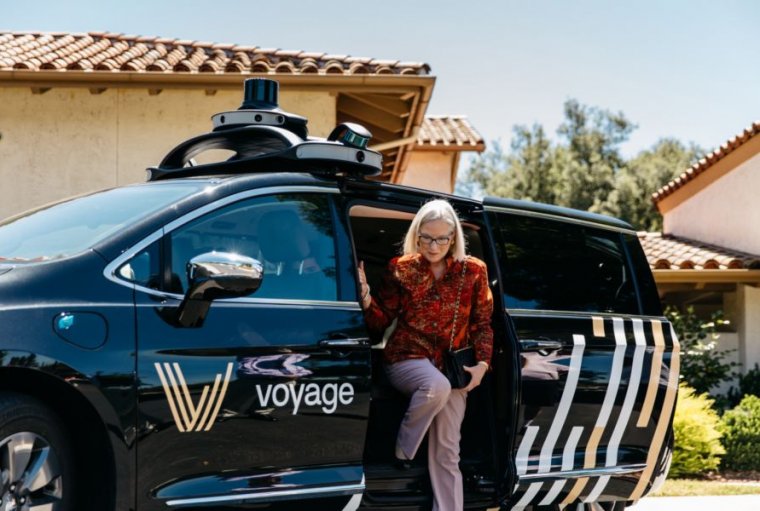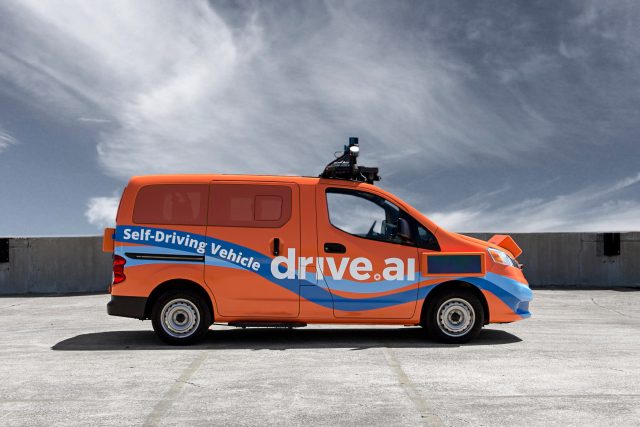
There's near-universal agreement that Google spinoff Waymo is the leading company in the driverless-vehicle business. And Waymo's strategy for developing fully driverless cars is very expensive. Before launching a commercial driverless car service, Waymo needs to convince itself—and the world—that its cars will be at least as safe as human drivers.
That has meant racking up millions of test miles on public roads, a process that has taken several years and cost Waymo well over $1 billion.
Waymo's more established competitors—including Uber, GM's Cruise, and the Ford-aligned Argo.ai—are pursuing a similar strategy. But a number of startups is also trying to build fully autonomous cars. And many of these companies simply don't have the money it takes to follow Waymo's lead. They need a different strategy—one that allows them to bring a product to market more quickly and at lower cost.
"We want to build a product that launches now and not in five or 10 years," said Voyage CEO Oliver Cameron in 2017.
Voyage and other self-driving car startups aren't aiming to sell customers a car that can drive anywhere autonomously or even to offer a Waymo-style taxi service. They're building low-speed, geographically limited shuttle services. These beginnings are modest, but they could lay the foundation for much more impressive technology in the future.
Startups are focusing on what’s safe, simple, and fast to market
Waymo has spent almost a decade developing its product before launching its first commercial service. Most startups can't do that, because investors want to see results much faster. So startups have looked for limited applications where they can offer services safely, sooner rather than later:
- Last year, Voyage began testing a self-driving taxi service in the Villages, a retirement community in San Jose, California. In January, the company expanded to a vastly larger retirement community, also called the Villages, near Orlando, Florida.
- A French startup called Navya is operating several fully autonomous shuttle services around the world, including in Las Vegas; Lyon, France; and the University of Michigan campus.
- Next month, a startup called Drive.ai will begin offering a shuttle service to a cluster of office buildings, apartments, and restaurants in the Dallas suburb of Frisco.
- For about a year, a startup called May Mobility has been conducting a pilot project to replace a human-driven parking-lot shuttle with a self-driving electric vehicle.
These projects have a number of important things in common. Most important, all of these vehicles are slow. Voyage operates in retirement communities where the maximum speed is 25 miles per hour (40 km/h). May Mobility operates electric vehicles that are limited by law to the same speed. Navya's shuttles have a maximum speed of 28mph (45km/h), and its services typically travel at less than 15mph. Drive.ai vehicles in Frisco will be traveling on roads with speed limits no higher than 40mph (65km/h).
Low maximum speeds are a huge safety boon. A pedestrian hit by a car is far more likely to survive if the car is moving less than 25mph. Similarly, a two-car collision is less likely to kill passengers if both cars are traveling at under 25mph.
On top of that, lower speeds mean shorter stopping distances, which makes avoiding collisions easier. And while a car traveling 70 miles per hour will strain the capabilities of even the most expensive lidar sensors, it's easy to find lidar sensors with enough range for use on a road where the speed limit is 25mph.
Another similarity: all of these geographically limited services are operated in partnership with third-party organizations. Voyage is working with retirement communities. Navya aims to work with local governments or universities. Drive.ai is working with several big commercial landlords in Frisco, while May Mobility's pilot shuttle would replace a human-driven shuttle provided by a major Detroit real-estate firm called Bedrock.
This approach solves a couple of big problems. Gathering high-resolution map data is a major expense for any fully self-driving service. Limiting operations to a specific geographic area—or even a specific route—minimizes the amount of data that needs to be collected, allowing services to be launched faster and at lower cost.
The problem, of course, is that no one would want to use a taxi service that only served a tiny corner of a metropolitan area. That's because most of the destinations you want to visit wouldn't be supported. This is where partnering with an existing organization—like a retirement community, university, or commercial landlord—is a big help. These partner organizations all manage campuses or other compact regions that make natural areas for small-scale shuttle or taxi services. And in many cases, the organizations are willing to directly fund the service in order to increase the value of their facilities.
The New York Times reported last year that the Villages in San Jose had a problem with elderly residents continuing to drive after it had become unsafe for them to do so. A few years earlier, the community had "considered a shuttle but decided it was too costly to have a full-time driver."
"The driverless car would be far less risky than the drivers that we currently have," one community leader told the Times.
Any organization that currently operates a human-driven shuttle to connect a building to distant parking or other attractions will be interested in switching to a driverless service to cut costs. And as costs come down, more commercial landlords—like the ones in Frisco—may become willing to pay for free shuttles as a way to increase the value of their properties.
All of which means that, while some of these services are currently unpaid pilot projects, they are not just pilot projects. If they can prove that the services are safe, reliable, and cheaper than human-driven shuttles, there's going to be a worldwide market for services that these startups can tap immediately—without having to figure out how to operate at higher speeds or in larger geographical areas.
These startups can scale up gracefully

It's easy to dismiss a 25mph shuttle service as not a real self-driving vehicle—and obviously it's not as impressive as building a Waymo-style autonomous taxi that travels safely at highway speeds. But we shouldn't underestimate these startups; once they have a portfolio of profitable low-speed shuttle services, it will be pretty easy to gradually expand into more demanding applications.
Commercial driverless shuttles will naturally generate sensor data as a side-effect of running the service. Once a company has a few million miles of data showing it can safely operate at 25mph, that can give it the confidence to begin operating shuttle services with top speeds of 30 or 35mph. That will generate more data that engineers can use to fine-tune their algorithms in preparation for services that go up to 40 or 45mph.
This incremental process will obviously take longer than Waymo's strategy of leaping straight to taxis going full highway speeds. But it has the potential to be much, much more affordable because most of the data can be collected by fully autonomous vehicles carrying paying customers.
And it's not obvious that technology will be the primary bottleneck for expanding driverless car services over the next few years. Even after Waymo perfects its software—solving problems like driving in the snow—there will be no shortage of logistical problems that will still need to be ironed out. Waymo will need to acquire hundreds of thousands of vehicles, map hundreds of cities, hire tens of thousands people to manage fleets and talk to customers, navigate regulations in hundreds of jurisdictions, fine-tune its user interface, attract a customer base, and so forth. That's going to take years no matter how quickly the technology improves.
Startups can begin tackling most of those issues now—before their technology has reached Waymo levels of sophistication. Having real commercial products in the marketplace lets them start learning about all the non-technology challenges a self-driving service will encounter and developing ways to address them.
For example, Voyage just announced a partnership with Enterprise that will allow the startup to lease vehicles and then modify them for self-driving use. These leasing agreements will reduce the amount of capital Voyage needs to expand into new markets, allowing the company to grow more quickly.
Also this week, May Mobility announced a partnership with Magna to manufacture its custom-designed electric vehicles at scale. This represents a different approach from the one Voyage is taking, but the upshot is the same: making it easier for May Mobility to acquire the vehicles it will need to launch new shuttle services around the country.
We can contrast the strategy of these startups with the strategy of established car companies pursuing a different kind of incrementalism. Car companies are in the business of selling cars to customers, so they don't have the option to start with cars that only work at low speeds in small, geo-fenced areas.
Instead, a number of car companies, including BMW, Fiat Chrysler, and Tesla, have started out with driver-assistance systems that are designed to operate at highway speeds. Instead of gradually expanding the geofenced area in which they're allowed to operate, these companies plan to initially require constant customer supervision—but then gradually reduce the amount of human supervision required as the technology becomes more sophisticated.
It's a superficially plausible strategy. The challenge is that it depends on customers remaining alert even as they're given less and less to do behind the wheel. Waymo tried a version of this strategy about five years ago, building a partially autonomous highway driver assistance system. But they found that it was too difficult to get drivers to continue paying attention to the road. And so they switched to a strategy similar to the one these other startups are using: start in a geographically limited area and expand it over time, but never let customers touch the steering wheel.
reader comments
73